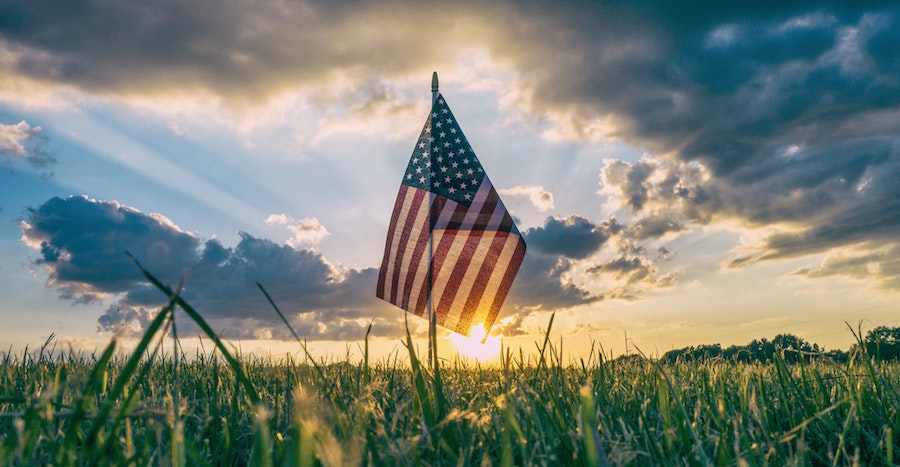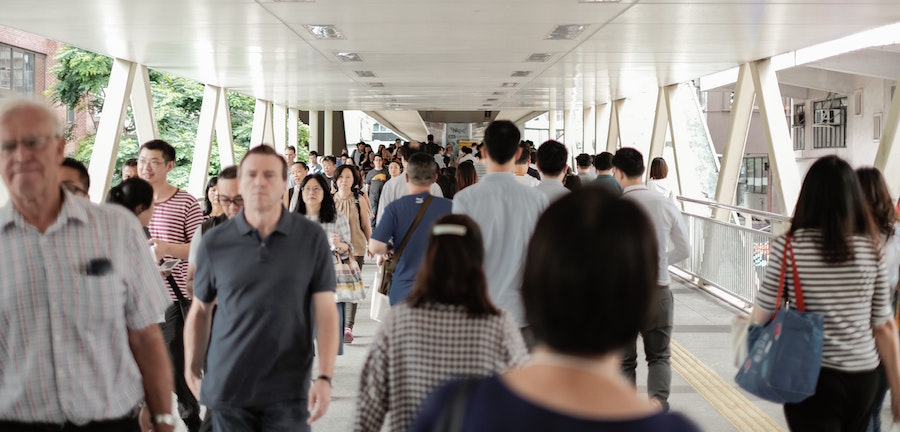“Safe Third Country Agreement” Found to Infringe on Refugees’ Rights to Section 7
Federal Court Invalidates Part of STCA
On July 22, 2020, Madam Justice McDonald at the Federal Court ruled that the provisions enacting the “Safe Third Country Agreement” (STCA) infringe on section 7 of the Canadian Charter of Rights and Freedoms and that this infringement is not justified under section 1.[1] Thus, the provisions are of no force or effect.[2]
Justice McDonald has given Parliament 6 months to respond to this declaration of invalidity.[3]
What Is The STCA?
“The Safe Third Country Agreement” (STCA), was intended to help Canada and the U.S. share responsibility for refugees in a way that complies with the Refugee Convention.[4] It has been in effect since December of 2014, when Canada and the U.S. each declared both countries safe for refugees.[5]
It was given effect by section 101(1)(e) of the Immigration and Refugee Protection Act and by section 159.3 of the Immigration and Refugee Protection Regulations, designating the U.S. as a “safe third country.”[6]
The STCA deems that those who arrive to Canada through a land Port of Entry (POE) from the U.S. is ineligible to make a refugee claim in Canada, unless they have close family members in Canada and meet specific exceptions.[7] However, claimants arriving from the U.S. by air, sea, or between land POEs are eligible to have their refugee claims assessed.[8]
Who Brought The Claim?
The individual applicants, whose situations vary, sought refugee protection in Canada as they feared persecution in their home country.[9] However, as they arrived from the U.S., they were ineligible to make a refugee claim in Canada due to the STCA.[10] One of the applicants was immediately imprisoned upon returning to the U.S.[11]
Several organizations, including the Canadian Council for Refugees, Amnesty International, and Canadian Council of Churches, were granted the right to participate in the applications as public interest parties.[12]
What Exactly Was The Claim Challenging?
The applicants challenged the constitutionality of the legislation implementing the STCA and the individual applicants each sought judicial review.[13]
The applicants’ challenge to the STCA was on two fronts.[14] First, they argued that the legislation and regulations that make the STCA are ultra vires, as the Canadian government failed in its duty to review the ongoing “safe third country” designation of the U.S.[15] The applicants argued that the U.S. is not a “safe third country” within the meaning of the statutory purpose and that the Canadian government had knowledge of this, with U.S. asylum practices and policies not keeping in line UNHCR Guidelines.[16]
Second, they argued that the legislation provisions implementing the STCA are contrary to sections 7 and 15 of the Canadian Charter of Rights and Freedoms.[17]
Decision of the Court
Justice McDonald found that the legislation enacting the STCA is not ultra vires.[18] However, she found that “the imprisonment and the attendant consequences are inconsistent with the spirit and objective of the STCA and are a violation of the rights guaranteed by section 7 of the Charter,” and is not saved by section 1.[19]
Breaking It Down – Section 7 Of The Charter
Section 7 of the Charter provides that:
“everyone has the right to life, liberty and security of the person and the right not to be deprived thereof except in accordance with the principles of fundamental justice.”[20]
Therefore, section 7 considerations are two-fold. First, a claimant must demonstrate that the challenged law deprives her or him of the right to life, liberty, or security of the person.[21] If section 7 is found to be engaged, the claimant must then demonstrate that this deprivation is not in accordance with the principles of fundamental justice of arbitrariness, overbreadth, and gross disproportionality.[22]
Liberty And Security Rights
In this case, the issue in relation to section 7 was if:
“the actions of Canadian officials in returning ineligible STCA claimants to U.S. authorities, where they will be imprisoned, is a sufficient causal connection so as to engage liberty and security of the person interests.”[23]
Justice McDonald cited one of the applicant’s imprisonment as compelling evidence of section 7 liberty rights being engaged, as she was immediately imprisoned after her forced return to the U.S.[24] In her Affidavit, Ms. Mustefa explains her time in solitary confinement as a “terrifying, isolating, and psychologically traumatic experience.”[25] She described skipping meals as she was not able to access appropriate food, losing nearly 15 pounds.[26] After being released from solitary confinement, she was detained alongside people who had criminal convictions and states that the facility was “freezing cold.”[27]
Due to the conditions faced by those detained, security rights were also found to be engaged under section 7 of the Charter.[28] Another one of the applicants, ABC, feared the MS-13 gang, if she were forced to return to El Salvador.[29] Due to various barriers facing asylum seekers in the U.S., such as accessing legal advice and acquiring the necessary documents, Justice McDonald concluded in the case of ABC, that had she been detained in the U.S., there was a real risk of refoulement.[30] The use of solitary confinement and the overall conditions of detention were also factors that raised the security of the persons interests.[31]
Justice McDonald said that just because STCA returnees are imprisoned by U.S. authorities, that does not immunize the actions of Canada.[32]
Principles Of Fundamental Justice
In this case, Justice McDonald found that the legislation provisions of the STCA were both overbreadth and grossly disproportional.[33]
The STCA provisions were found to be overbroad, as the deprivation of liberty rights of STCA returnees has no connection to the “mischief contemplated by the legislature.”[34]
Additionally, the risks of detention and the loss of security of the person, which are facilitated by the STCA, were found to be grossly disproportional to the administrative benefits of the STCA.[35]
Saved By Section 1?
Section 1 of the Charter provides that:
“The Canadian Charter of Rights and Freedoms guarantees the rights and freedoms set out in its subject only to such reasonable limits prescribed by law as can be demonstrably justified in a free and democratic society.”[36]
Under section 1, the respondents bear the burden of proof and they need evidence to discharge this burden.[37]
The respondents argued that the pressing and substantial objectives of the legislations, which is the sharing of responsibility, have been met.[38] They argued that there would be an increase in the challenges that the Canadian refugee system would face if the volume of refugee claimants were to increase, and that although failed STCA claimants are subjected to detention in the U.S., there is a fair detention review process available.[39]
However, Justice McDonald found that argument to be weak, as in the past, Canada has demonstrated flexibility in adjusting to fluctuations in refugee numbers in response to certain needs.[40]
Thus, it was found that the STCA provisions were not saved by section 1.[41]
Wait, What About Section 15 Of The Charter?
Justice McDonald declined to address section 15 of the Charter challenge due to the finding of the infringement of section 7.[42]
Citations
[1] Canadian Council for Refugees v Canada (Immigration, Refugees, and Citizenship), 2020 FC 770 at para 162.
[1] Ibid.
[1] Ibid at para 163.
[1] Ibid.
[1] “Safe Third Country” online: Canadian Council for Refugees <https://ccrweb.ca/en/safe-third-country>.
[1] Supra note 1 at para 2.
[1] Ibid at para 3.
[1] Ibid.
[1] Ibid at para 5.
[1] Ibid.
[1] Ibid at para 92.
[1] Ibid at para 7.
[1] Ibid at para 1.
[1] Ibid at para 9.
[1] Ibid.
[1] Ibid at para 65.
[1] Ibid at para 10.
[1] Ibid at para 80.
[1] Ibid at para 10.
[1] Canadian Charter of Rights and Freedoms, s 7, Part I of the Constitution Act, 1982, being Schedule B to the Canada Act 1982 (UK), 1982, c 11, s 7 [Charter].
[1] Supra note 1 at para 85.
[1] Ibid at paras 85, 86.
[1] Ibid at para 94.
[1] Ibid at paras 94, 103.
[1] Ibid at 96.
[1] Ibid.
[1] Ibid.
[1] Ibid at para 115.
[1] Ibid at para 105.
[1] Ibid at para 106.
[1] Ibid at para 110.
[1] Ibid at para 100.
[1] Ibid at paras 122-136.
[1] Ibid at para 131.
[1] Ibid at para 136.
[1] Charter, supra note 19 at s. 1.
[1] Supra note 1 at para 143.
[1] Ibid at para 145
[1] Ibid at paras 145, 146.
[1] Ibid at para 147.
[1] Ibid at para 149.
[1] Ibid at para 154.
[1] Canadian Council for Refugees v Canada (Immigration, Refugees, and Citizenship), 2020 FC 770 at para 162.
[2] Ibid.
[3] Ibid at para 163.
[4] Ibid.
[5] “Safe Third Country” online: Canadian Council for Refugees <https://ccrweb.ca/en/safe-third-country>.
[6] Supra note 1 at para 2.
[7] Ibid at para 3.
[8] Ibid.
[9] Ibid at para 5.
[10] Ibid.
[11] Ibid at para 92.
[12] Ibid at para 7.
[13] Ibid at para 1.
[14] Ibid at para 9.
[15] Ibid.
[16] Ibid at para 65.
[17] Ibid at para 10.
[18] Ibid at para 80.
[19] Ibid at para 10.
[20] Canadian Charter of Rights and Freedoms, s 7, Part I of the Constitution Act, 1982, being Schedule B to the Canada Act 1982 (UK), 1982, c 11, s 7 [Charter].
[21] Supra note 1 at para 85.
[22] Ibid at paras 85, 86.
[23] Ibid at para 94.
[24] Ibid at paras 94, 103.
[25] Ibid at 96.
[26] Ibid.
[27] Ibid.
[28] Ibid at para 115.
[29] Ibid at para 105.
[30] Ibid at para 106.
[31] Ibid at para 110.
[32] Ibid at para 100.
[33] Ibid at paras 122-136.
[34] Ibid at para 131.
[35] Ibid at para 136.
[36] Charter, supra note 19 at s. 1.
[37] Supra note 1 at para 143.
[38] Ibid at para 145
[39] Ibid at paras 145, 146.
[40] Ibid at para 147.
[41] Ibid at para 149.
[42] Ibid at para 154.
Canadian Work Permit Levels Remain Steady Despite Pandemic
Number of Work Permits Issued Has Been Consistent Since March
Despite the coronavirus travel restrictions remaining in place since March, recent figures show that Canadian work permit levels have not been affected by the pandemic.
According to CIC News, Canada issued 32,995 work permits in January 2020, but by March, the number dropped by 28 percent to just 19,650. However, the decrease was short-lived, as work permit levels rose back up by April, with 29,900 issued.
Levels dropped again in May, but overall, remained steady at 25,125 work permits.
These numbers include new work permits issued to those who are eligible to work in Canada through the Temporary Foreign Worker Program (TFWP) or the International Mobility Program (IMP).
Why Have Levels Remained So Steady?
The most likely reason that work permit levels have remained steady despite the global pandemic and border closure is that early on, Canada offered travel exemptions for foreign workers, allowing them to enter Canada to live and work. The only stipulation is that they must not show symptoms of COVID-19, and must also present a credible quarantine plan and self-isolate for 14 days upon arrival.
The federal government even allocated $50 million in funding to help temporary foreign workers self-isolate after entering Canada.
In May, the federal government launched the Agri-Food Immigration Pilot, which provides temporary foreign workers with work experience in the agri-food industry, in an effort to help fill labour shortages in Canada’s food and agriculture sectors. In total, the Agri-Food Immigration Pilot will accept up to 2,750 principal applicants plus their family members every year until 2023.
About Canada’s Foreign Workers Programs
The Temporary Foreign Worker Program (TFWP) launched in 1973, was created to allow Canadian employers the opportunity to seek out talent and recruit workers from outside the country when unable to find Canadians to fill job vacancies. The TFWP covers multiple sectors, however, seasonal agricultural workers make up the biggest chunk of temporary foreign workers admitted to Canada through this program.
The International Mobility Program (IMP), on the other hand, tends to issue the majority of work permits. This program focuses on recruiting foreign workers to help meet Canada’s broad economic and social needs and includes the Global Talent Stream (GTS), and the Post Graduation Work Permit (PGWP).
The GTS is geared towards tech workers who can apply to work for designated companies or be hired in highly skilled occupations.
Meanwhile, the PGWP allows study permit holders to gain up to three years of Canadian work experience, and eventually apply for permanent residence.
Federal Judge Raises Concerns Involving the CSIS Identifying an Institutional Threat to Canadians’ Charter Rights
Global and National Context of Unease
Emerging into the second half of 2020, societies around the world have grappled with COVID-19 and protests against police brutality and institutional racism. Accompanying this, issues of individual and human rights have been brought to the forefront as people ask to what extent can a government legislate policies, rules, and societal controls without infringing on an individual’s rights? When and how is it okay for the government to disrupt a protest? Is the use of tear gas on civilians ever acceptable? Does the government have a right to mandate the wearing of masks in public? In short, to what extent do crises allow a government to infringe and/or inconvenience its citizens’ rights?
These events and questions have also magnified issues of institutional inequality and justice. Police brutality, racial inequality, and socio-economic gaps are all examples of these institutional and judicial problems that have been pushed to the forefront of peoples’ concerns. Problems and infringements on the rule of law do not only exist in this vacuum, however. In what way can this be seen in legal practice and the administration of justice?
A “Cavalier Institutional Approach” to the Rule of Law
Federal Judge Patrick Gleeson has recently shed light on this issue by calling out the Canadian Security Intelligence Service (CSIS) for having a “cavalier institutional approach” to the rule of law. What Gleeson is referring to is not instances of the police making arrests or seizing evidence without a warrant. He is instead addressing concerning new revelations where departments and police forces have lied, fabricated evidence, or misrepresented evidence to judges in order to obtain warrants. This is worrisome, as it poses a “high legal risk” to the transparency, legal process, and legitimacy of the entire judicial system.
Furthermore, it can be interpreted as widespread institutional violations of peoples’ Charter rights under Section 8 – the right against unreasonable search and seizure, as well as Section 24 – the right to obtain remedy for an infringement or denial of one’s rights. Although Section 24 can lead to the exclusion of evidence seized illegally, the decision to include or exclude wrongfully seized evidence ultimately comes from a judge’s decision on whether or not this information could have and would have been discoverable without the wrongful search.
This remedy in and of itself brings forward some legal issues of its own. Firstly, the frequent admittance of evidence that had been seized illegally “would bring the administration of justice into disrepute”. Secondly, it would create an appearance that an individuals’ Charter rights, the most highly regarded individual rights in Canada, are subject to the whim of government bureaucrats and the Judiciary. Thirdly, the continued admittance of wrongfully obtained evidence would create a chasm where governmental departments and police forces are left to freely infringe on citizens’ charter rights without being held accountable or facing any repercussions.
The discussion of looking at remedies, however, is futile, so long as institutional acts of illegality are not reported to or by CSIS or the Department of Justice, where the withholding of information was not a result of unforeseen circumstances or neglect, but rather through an institutional response that ignored the illegality to their own benefit.
Mr. Gleeson addressed these complex issues with the following statements:
“The security intelligence function is vital to the nation’s security. I appreciate the challenges that those charged with the responsibilities of carrying out this function face. Despite these challenges, this Court and the Canadian public must have confidence that respect for the rule of law is and remains a foundational principle underpinning all national security intelligence decision-making. The circumstances disclosed here suggest a degree of institutional disregard for—or, at the very least, a cavalier institutional approach to—the duty of candour and regrettably the rule of law.”
Institutional Change, Action, and Accountability
Fortunately, the current Interim Director acknowledges these problems and attributes them to changes that have occurred in “Canada’s legal landscape” and recognizes that the law is evolving to where there is now an increased legal risk to CSIS employees. With acknowledging these issues, the Federal government has created a legislative justification regime to properly address the risks stressed by Mr. Gleeson. This has left Canadians in a state where they must wait to see what changes to the implementation and upholding of Charter rights occurs and, perhaps, what to expect regarding their other rights.
Will the Canadian government and the administration of justice show that fundamental rights are to be respected before all else? Or will they leave the Canadian public with a sense of insecurity and distrust at a time where people are already living with unease and skepticism?
Citations
https://www.canada.ca/en/security-intelligence-service.html
U.S. Immigration to Canada Has Skyrocketed in Recent Years
Why More Americans Are Moving to Canada Than Ever Before
Whether it’s the controversial election of Donald Trump as president, or other factors are at play, one thing is certain: U.S. immigration to Canada is at an all-time high, according to CIC News.
According to recent figures, over 10,000 Americans made Canada their new home in 2019 by immigrating via the Express Entry system.
For context, just three years prior in 2015, only 600 U.S. residents immigrated to Canada through the Express Entry system. However, it’s also important to note that the system itself only launched that same year.
The popularity of Express Entry has not slowed down despite the coronavirus pandemic, as draws have continued to take place over the past few months. In fact, Immigration, Refugees and Citizenship Canada (IRCC) held its largest ever Express Entry drawback in February, inviting 4,900 candidates in just a single draw.
Other Ways U.S. Residents Are Coming to Canada
Along with Express Entry, there are other immigration avenues available for skilled workers looking to obtain permanent residence in Canada that are attractive for U.S. residents. This includes the Provincial Nominee Program.
Why Is Canada So Attractive To Americans?
The election of U.S. President Donald Trump in 2016 has created a lot of uncertainty surrounding U.S. immigration policy. In fact, in response to the COVID-19 pandemic and the large number of cases plaguing the country, Trump recently signed an Executive Order suspending immigration and preventing new green card holders and temporary foreign workers from coming to the U.S. in 2020.
Canada’s Minister of Immigration, Refugees and Citizenship, Marco Mendicino, responded to this move by welcoming newcomers to “Come to Canada” instead, adding that the U.S. immigration suspension would “spring Canada’s economic recovery” post-pandemic.
As a result of the growing contention for immigration expressed by the Trump administration, many foreign nationals living and working in the U.S. have been deciding to pack up and pursue employment and permanent residence in Canada due to its favourable stance on immigration along with programs like the Express Entry system.
Workers immigrating to Canada from the U.S. also tend to have a competitive advantage when applying through the Express System. The reason for this is that U.S. residents are often highly educated, fluent in English, and have extensive work experience – all factors that will award a candidate a high number of points in Express Entry.
How COVID-19 Will Affect Immigration From the U.S.
Despite the fact that Express Entry draws are continuing to take place, a travel restriction remains in place, blocking U.S. residents from entering Canada for non-essential travel – with some exceptions.
Exemptions to the U.S. travel restrictions include:
- Immediate family members of Canadian citizens or permanent residents
- Those travelling for an essential (non-discretionary) purpose
- Temporary foreign workers
- Some international students
- Some approved permanent residents
Additional exemptions are listed here.
As it stands, the travel restriction will remain in place until at least August 21, but could be extended due to the recent surge in COVID-19 cases across the U.S.
Even still, Canada has remained committed to welcoming newcomers and maintaining immigration levels.
“We have a plan in place that looks to leverage the best and the brightest from around the world,” said Mendocino in a recent CTV interview.
Alberta to Accelerate Immigration Stream Aimed At Targeting U.S International Students
Alberta Speeds Up Immigration Reform In Hopes of Addressing Labour Shortages
Alberta is looking to recruit international students that studied in the U.S. to come live and work in Canada permanently as a part of the province’s recently announced immigration system overhaul.
According to Alberta’s recently released COVID-19 economic Recovery Plan, the province will launch two new immigration streams, called the Foreign Graduate Startup Visa Program and the Student Entrepreneur program. These streams will be heavily promoted to “graduates of U.S. universities who are not welcome in the United States” in hopes of filling jobs in the information and technology sector.
Coincidently, the Alberta Recovery Plan was released on June 29th, not long after United States President, Donald Trump announced an immigration suspension, which would also require international students enrolled in full-time online study programs to leave the U.S.
“One of the key factors holding back Alberta’s technology sector is a lack of people with relevant skills,” the Alberta Recovery Plan further states, “At the same time, the United States has further closed its border to some of the world’s most talented information technology workers and start-up entrepreneurs.”
Despite the toll that the COVID-19 pandemic has had on jobs and the economy, the new Foreign Graduate Startup Visa Program proceed as planned in order to support technology and innovation in the province.
The Negative Effect COVID-19 Has Had on Alberta Immigration
While these new immigration reforms are encouraging, Alberta has also announced some unfortunate news regarding the state of immigration in the province.
According to the Recovery Plan, Alberta will be reducing its new permanent resident targets for 2020 from 6,250 newcomers to just 4,000.
Furthermore, the province will also request that the federal government remove the majority of occupational categories under the Temporary Foreign Worker Program (TFWP) in hopes of “getting Albertans back to work.”
It is not yet known which occupational categories will be removed, however, the province has said that certain specialized occupations experiencing labour shortages will be exempt.
“We know job creators have a hard time filling vacancies in areas such as caregiving, emergency response, hospitality positions in the mountain parks, and agriculture, that is why these sectors will be exempt from these changes,” a spokesperson from the Government of Alberta told CIC News. “Employers in these sectors will be able to access TFWs to fill vacant positions.”





